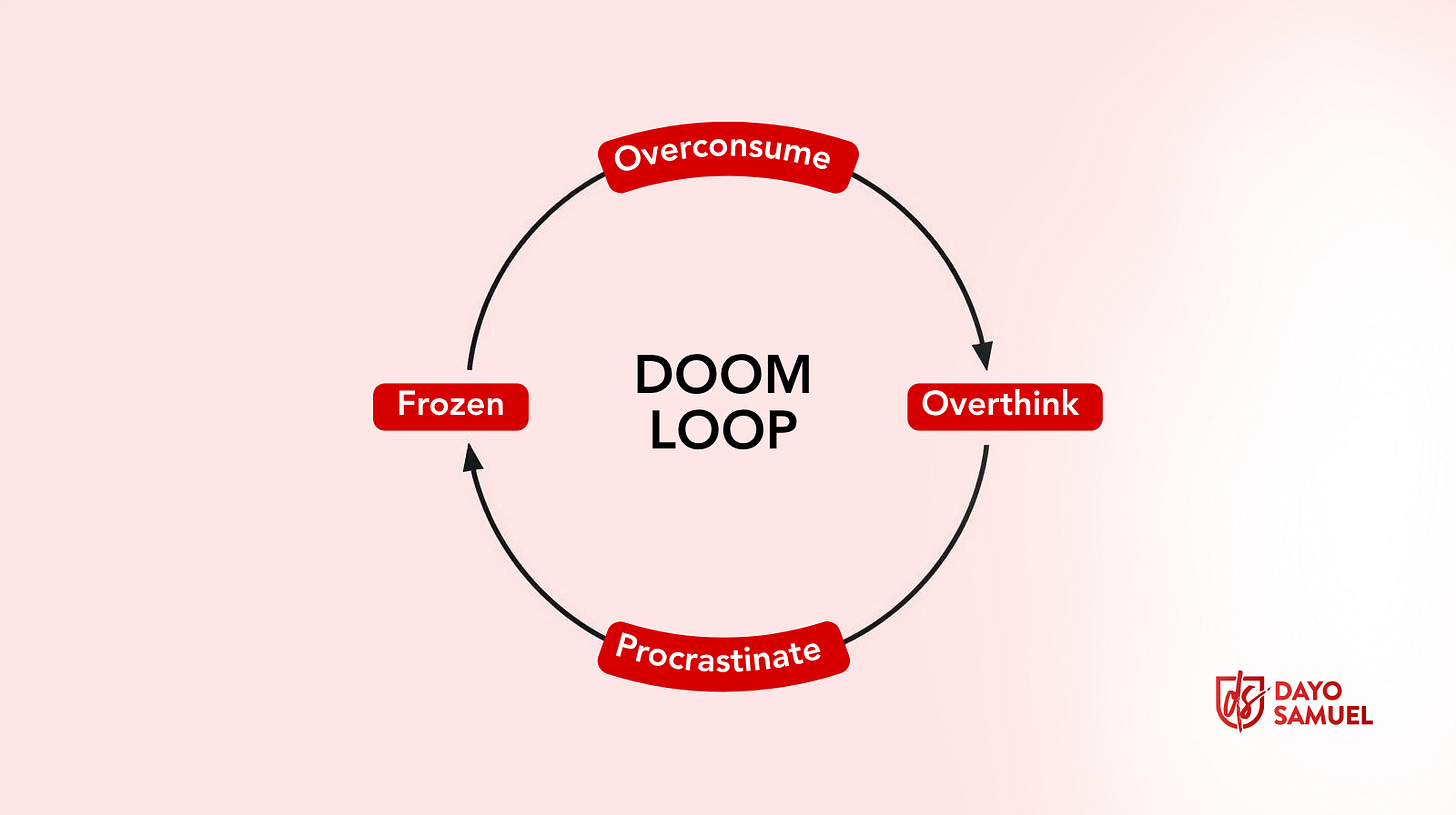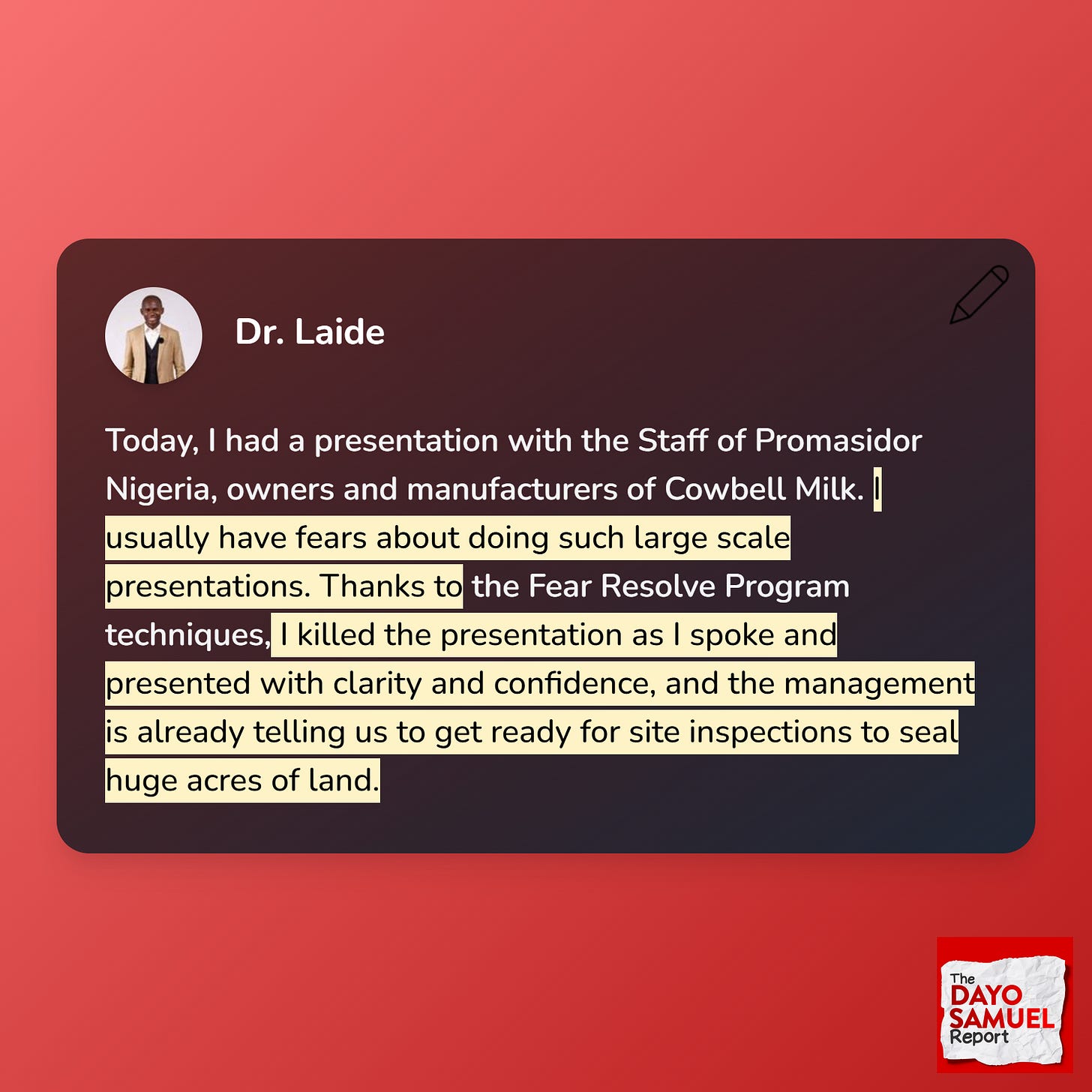Overlearning Yourself into Zero Action
How to break the cycle and finally take action
Quick heads-up before we dive in.
If you joined my last workshop or if you’ve been sitting on a good idea for too long, this will hit home.
I’ve opened a small pilot program for people ready to stop learning about business and start building one that earns £5K/month here in the UK.
You’ll get personal guidance through every part of the way:
• turning your ideas into Products That Pay
• getting your Tax-Smart Setup sorted
• and building with Visa-Safe Confidence
If you want to be part of it, just reply to this email or send me a message that says “I’m in.”
Now, let’s talk about why so many of us stall before we even start…
The other day, I dropped our family car off at the mechanic.
It’s about a 12-minute walk back home. A straight shot.
But as I rounded a corner near the train tracks, I saw a footpath.
My curiosity sparked. "Wait, so there's a path here?"
Instead of taking the known, 12-minute route, I took the footpath.
Forty minutes later, I arrived home.
Tired. Exhausted. Partly agitated.
That detour, which I took just to discover something new, led me past a lake, through a wildlife center, and around several gardens.
It cost me 30 extra minutes.
It reminds me of the historical Israelites' journey.
They could see their destination, but because they veered off track, a journey that should have taken 40 days cost them 40 years.
How often do we do this in our work?
We see the goal, but get distracted by one more course, one more YouTube video, one more "idea."
We call it "learning."
But really, we're just losing time.
You're caught in a doom loop: Overconsume → Overthink → Procrastinate → Frozen.
And maybe you've started to believe the problem is you.
That you're lazy or undisciplined.
I'm here to tell you that’s a lazy diagnosis.
You don't have an information problem. You have an emotion problem.
Stop treating the symptom
The world tells you to manage your time better.
To use a new productivity app. Maybe even Obsidian.
To just "force yourself" to do the work. That’s like a doctor treating a cough without checking the lungs.
Procrastination is not a disease. It’s a symptom.
I once wrote that "Procrastination is more an emotional problem than anything else."
The task you’re putting off is making you feel bad, perhaps it’s boring, too difficult, or you’re worried about failing, and to make yourself feel better in the moment, you start doing something else.
The solution, then, isn't more willpower.
It's better self-awareness.
You need to stop collecting dots and start diagnosing why you're afraid to connect them.
Find Your Procrastination Profile
All procrastination isn't the same.
Years ago, I developed an assessment tool that helps pinpoint the distinct emotional patterns that keep us stuck. I call them the six "Procrastination Profiles."
They are:
The Purposeful Procrastinator
The Passionate Procrastinator
The High-Performance Procrastinator
The Protective Procrastinator
The Pensive Procrastinator
The Peacekeeping Procrastinator
For multi-skilled professionals like you, two of them are incredibly common. So check if you recognize yourself:
The Purposeful Procrastinator: Your core belief is, "If it is not the best, it’s not good enough." This perfectionism means your work is never truly done. Even when you have created a masterpiece, you find faults in your own work, which makes you push off presenting it to the world.
The High-Performance Procrastinator: You have big dreams of becoming "Number 1" or a top player in your field. However, you become paralysed by the lack of clarity on what to do first. This leads you to procrastinate because you're stuck trying to create the perfect plan, a plan that may never leave your notepad.
Having worked with a lot of people, understanding your profile is the first step to freedom. It gives you the power to address the root cause, not just the frustrating symptom.
[Insert Visual: Simple cards or a clean table for the 2 emphasized "Procrastination Profiles." Each card has the title (e.g., "The Purposeful Procrastinator") and a one-sentence summary of their core emotional driver. This makes the concepts easily digestible and memorable.]
From Fear to Action
This isn't just theory.
A client of mine used to have crippling fears about doing large-scale presentations. He was stuck.
But once he learned to understand and address his root emotional triggers, everything changed.
He told me:
His breakthrough didn't come from a new planner.
It came from a new perspective on what was really holding him back.
You are not stuck because you lack information.
You are not stuck because you are lazy.
You are stuck because you are human, and you've been trying to solve an emotional problem with a logistical solution.
Stop taking another footpath hoping it’s a shortcut.
Stop gathering more information from the outside.
Start by gaining clarity on the inside.
Understand your profile. Address the real feeling. And watch yourself get back on the 10-minute path to your destination.
Here's how you can apply this today:
Reflect: Which of the profiles I shared resonates most with you? What is the primary emotion (the need for perfection, fear of making a mistake, overwhelm from a lack of a clear plan) that you feel right before you get distracted?
Act: Understanding your procrastination profile is step one. Step two is building the thing you’ve been dreaming about before another year passes.
That’s exactly what we’re doing in the UK Business Launch Case Study Pilot.
You don’t need another course.
You need courage, structure, and the right support to act on what you already know.
That’s what the UK Business Launch Case Study Pilot gives you. 12 months of focused help to build your business, stay compliant, and finally see money coming in.
If you want to join us, just reply “I’m in.”
I’ll send you the next steps personally.
Live courageously,
Dayo Samuel 💯




